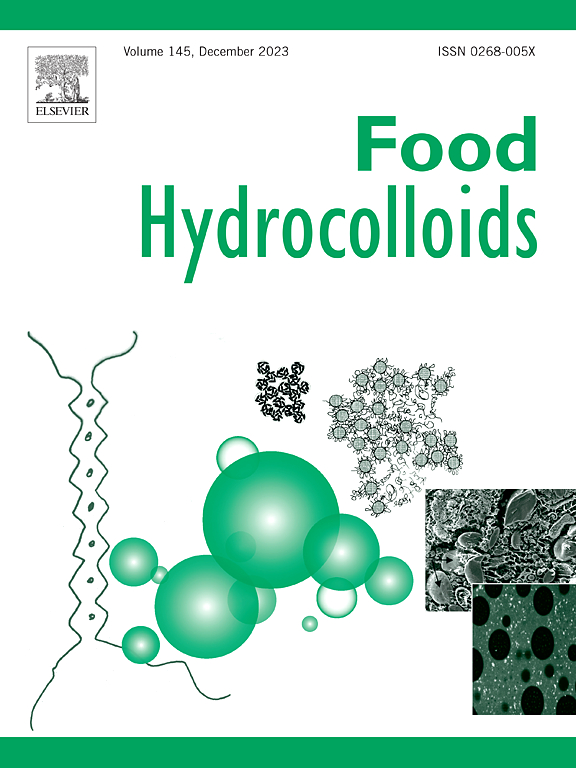Structural differences in novel pectic polysaccharides from Rosa roxburghii tratt drive distinct gut microbiota profiles: Evidence from in vitro fecal fermentation
IF 11
1区 农林科学
Q1 CHEMISTRY, APPLIED
引用次数: 0
Abstract
Rosa roxburghii Tratt fruits are rich in polysaccharides. Two novel polysaccharides, RRTP-1 and RRTP-2, were purified and characterized as pectin using HPLC, FTIR, GC-MS, and NMR analysis. RRTP-1 was primarily composed of homogalacturonan (HG), featuring a linear main chain with various branching structures including galactose, glucose, arabinose, and mannose residues. RRTP-2 was also a highly branched HG with significant contributions from galactose, rhamnose and arabinose. Compared to RRTP-2 (262.35 kDa, DE 22.03 %), RRTP-1 exhibited a lower molecular weight (179.05 kDa) and a higher degree of esterification (DE, 41.10 %). Both of them were efficiently utilized by gut microbes to produce butyric acid and lower pH. Their structural differences led to distinct gut microbiota composition. RRTP-1 selectively enriched Phocaeicola, Faecalibacterium, and Bifidobacterium, whereas RRTP-2 selectively enriched Limosilactobacillus, Lachnospira, and Coprococcus. Despite structure differences in RRTP-1 and RRTP-2, the keystone microbes and enzymes involved in their degradation exhibited similarities. Bacteroides and Megamonas emerged as dominant contributors. Glycoside hydrolases and carbohydrate esterases were identified as the primary enzymes facilitating their breakdown. These findings suggest that the fine structure of pectin exerts a selective effect on fermenting consortia. Furthermore, both RRTP-1 and RRTP-2 show promise as effective prebiotics.

求助全文
约1分钟内获得全文
求助全文
来源期刊

Food Hydrocolloids
工程技术-食品科技
CiteScore
19.90
自引率
14.00%
发文量
871
审稿时长
37 days
期刊介绍:
Food Hydrocolloids publishes original and innovative research focused on the characterization, functional properties, and applications of hydrocolloid materials used in food products. These hydrocolloids, defined as polysaccharides and proteins of commercial importance, are added to control aspects such as texture, stability, rheology, and sensory properties. The research's primary emphasis should be on the hydrocolloids themselves, with thorough descriptions of their source, nature, and physicochemical characteristics. Manuscripts are expected to clearly outline specific aims and objectives, include a fundamental discussion of research findings at the molecular level, and address the significance of the results. Studies on hydrocolloids in complex formulations should concentrate on their overall properties and mechanisms of action, while simple formulation development studies may not be considered for publication.
The main areas of interest are:
-Chemical and physicochemical characterisation
Thermal properties including glass transitions and conformational changes-
Rheological properties including viscosity, viscoelastic properties and gelation behaviour-
The influence on organoleptic properties-
Interfacial properties including stabilisation of dispersions, emulsions and foams-
Film forming properties with application to edible films and active packaging-
Encapsulation and controlled release of active compounds-
The influence on health including their role as dietary fibre-
Manipulation of hydrocolloid structure and functionality through chemical, biochemical and physical processes-
New hydrocolloids and hydrocolloid sources of commercial potential.
The Journal also publishes Review articles that provide an overview of the latest developments in topics of specific interest to researchers in this field of activity.
 求助内容:
求助内容: 应助结果提醒方式:
应助结果提醒方式:


